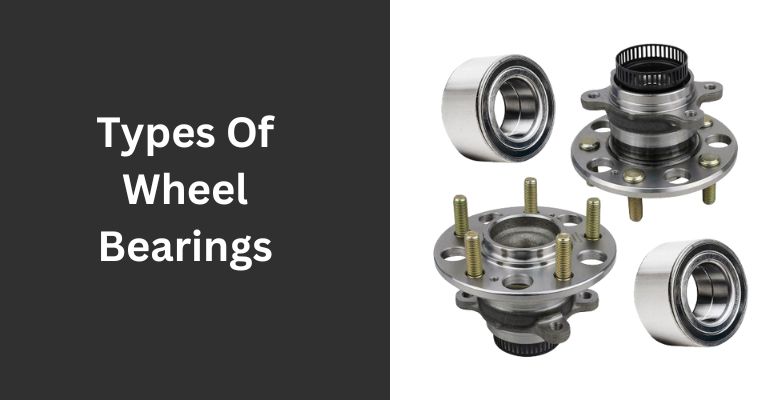Wheel bearings are designed specifically for use in wheels, as their names imply. A race is a metallic ring that surrounds the balls in a bearing and secures them in place. These balls are made of steel, and the ring that surrounds them is called a race. Even while bearings come in a broad variety of designs, their functionality is very similar, and they all accomplish the same task, which is to minimize the amount of friction that exists between two spinning components.
Your vehicle’s wheel bearings are an essential component of its mechanical system. They make it possible for your vehicle to glide easily over the ground, which is a vital component of driving. It is possible to categorize bearings according to the method in which they drive the vehicle.
The amount of friction produced by a wheel depends on its speed and direction of rotation. Because a wheel bearing’s weight determines the amount of resistance it exerts, this component, which lowers the amount of friction that occurs between the wheel’s moving elements, is known as a “wheel bearing.” Erosion and wear may be minimized, and the lifespan of a wheel increased by lowering the amount of resistance that exists between its moving components. The function of the wheel dictates which bearings are appropriate for the application at hand.
Types of Wheel Bearings
Below are some of the most typical kinds of wheel bearings sold by wheel hub bearing manufacturers:
1. Ball Bearings
The ball bearing is, without a doubt, the most prevalent form of wheel bearing, and it is also the one that is the most adaptable. Ball bearings are capable of absorbing stresses in both the radial and thrust directions simultaneously. The amount of weight placed on a wheel is referred to as its radial load. And the cornering pressure is represented by the thrust load. You may find ball bearings in wheels as diverse as those found on roller skates and those found on vehicle tires. Ball bearings come in a variety of sizes.
2. Cartridge bearings
The cartridge bearing is the most common form, and it may be used in applications involving both automobiles and bicycles. They are constructed from several smaller balls that are hermetically sealed together in one unit and revolve around a central axis. Taper roller bearings are a kind of bearing that is often seen in industrial settings. These bearings are constructed from several cylindrical rollers that are equally placed around the bearing.
Applications that demand high loads often make use of thrust bearings, which are comprised of several thrust plates that are linked by thrust rods. Thrust bearings may also be referred to as thrust bearing assemblies. Journal bearings are used in settings that call for a great deal of torque. These bearings are constructed from several little balls that are hermetically sealed together and move along an axis. Applications that demand high loads often make use of thrust bearings with cages. These bearings are comprised of several balls that are encased in a cage and are employed in such applications.
3. Tapered Roller Bearings
The most common use for tapered roller bearings may be found in the wheels of ordinary automobiles and trucks. When the thrust force is at its maximum, which occurs during cornering, the cone form makes it possible to reduce the amount of friction that occurs. The wheels of an automobile will tilt to varied degrees as the car turns. It is made possible by tapered roller bearings, which prevent moving components from grinding against one another.
4. Bearings for Precision Ball Games
Ball bearings intended for precision applications are built to withstand high pressure and provide exceptional performance. In comparison to traditional bearings, ball bearings from wheel hub bearing manufacturers create less heat, have a greater maximum rotational speed, and have much less frictional resistance. The landing wheels of airplanes and racing automobiles that compete at the highest level both require precision ball bearings. They have a specialized construction that allows them to withstand significant radial and thrust stresses.
5. Planetary gear-type bearings
Bearings like this may be found in the wheel’s hub, and their presence there contributes to the wheel’s ability to resist rotation. When they become defective, they may cause the wheel to tremble, which can ultimately lead to the wheel braking.
Bottom Line
The demand for wheel hub bearing manufacturers is in continuous growth. In case you discover a problem with the wheel bearings, the first thing you should do is speak with a professional. The firms that produce these components include those that specialize in wheel hub bearings. Bearings for automobiles, trucks, and motorbikes may all be manufactured by bearing manufacturers.
